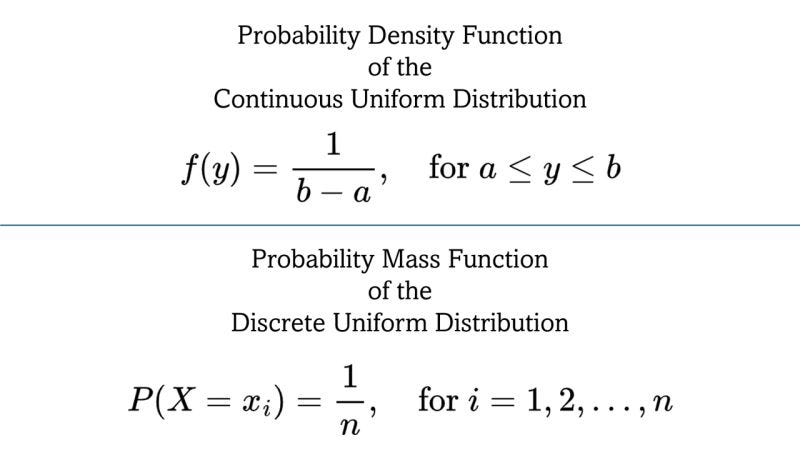Continuous vs. Discrete Uniform Distribution
A distribution with a finite number of equiprobable outcomes
Among statisticians and data scientists, "the uniform distribution" usually denotes the CONTINUOUS uniform distribution. However, there is also the DISCRETE uniform distribution. Let's distinguish them.
Intuitively, they are very similar, but they apply to 2 different types of random variables.
The continuous uniform distribution describes a situation where all outcomes within a certain interval are equally likely. It is defined over a continuous range of values. It is often used in modelling continuous data and generating random numbers for simulations. Cryptography and statistical quality control are 2 domains where the uniform distribution has particular relevance. To learn more, please read the relevant article on Wikipedia.
The discrete uniform distribution describes a situation where a finite number of outcomes are equally likely. Each individual outcome has the same probability. Here is the relevant article on Wikipedia.
The discrete uniform distribution is commonly used in simple random sampling and combinatorial probability models. Typical applications include rolling a fair die or drawing a card from a deck.
Each side of a die has the same probability of appearing on top.
Each card has the same probability of being drawn.
Again, most of the time, statisticians and data scientists usually refer to the continuous version. However, it is worthwhile to know that the discrete version also exists, in case you ever need to use it.



